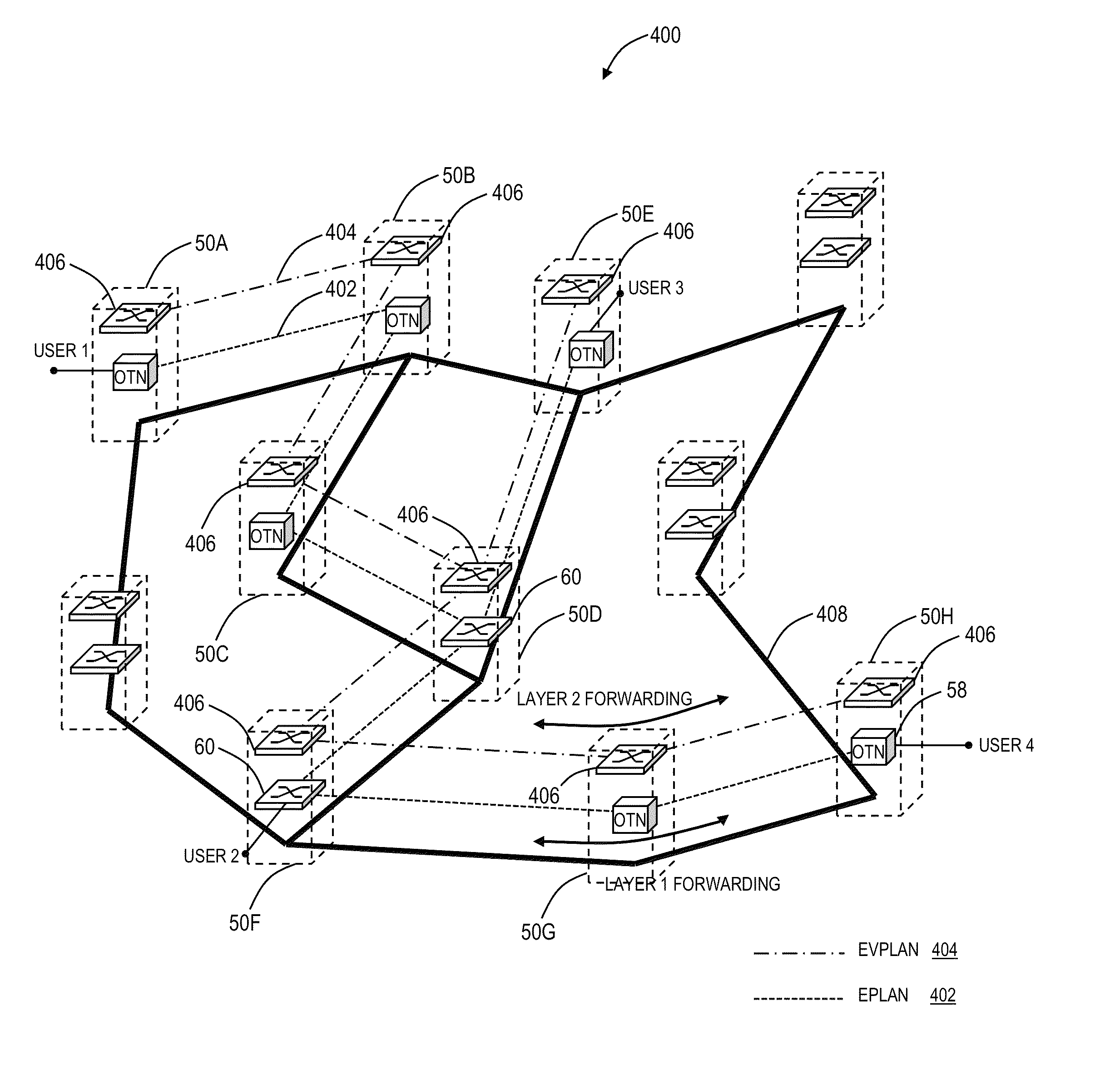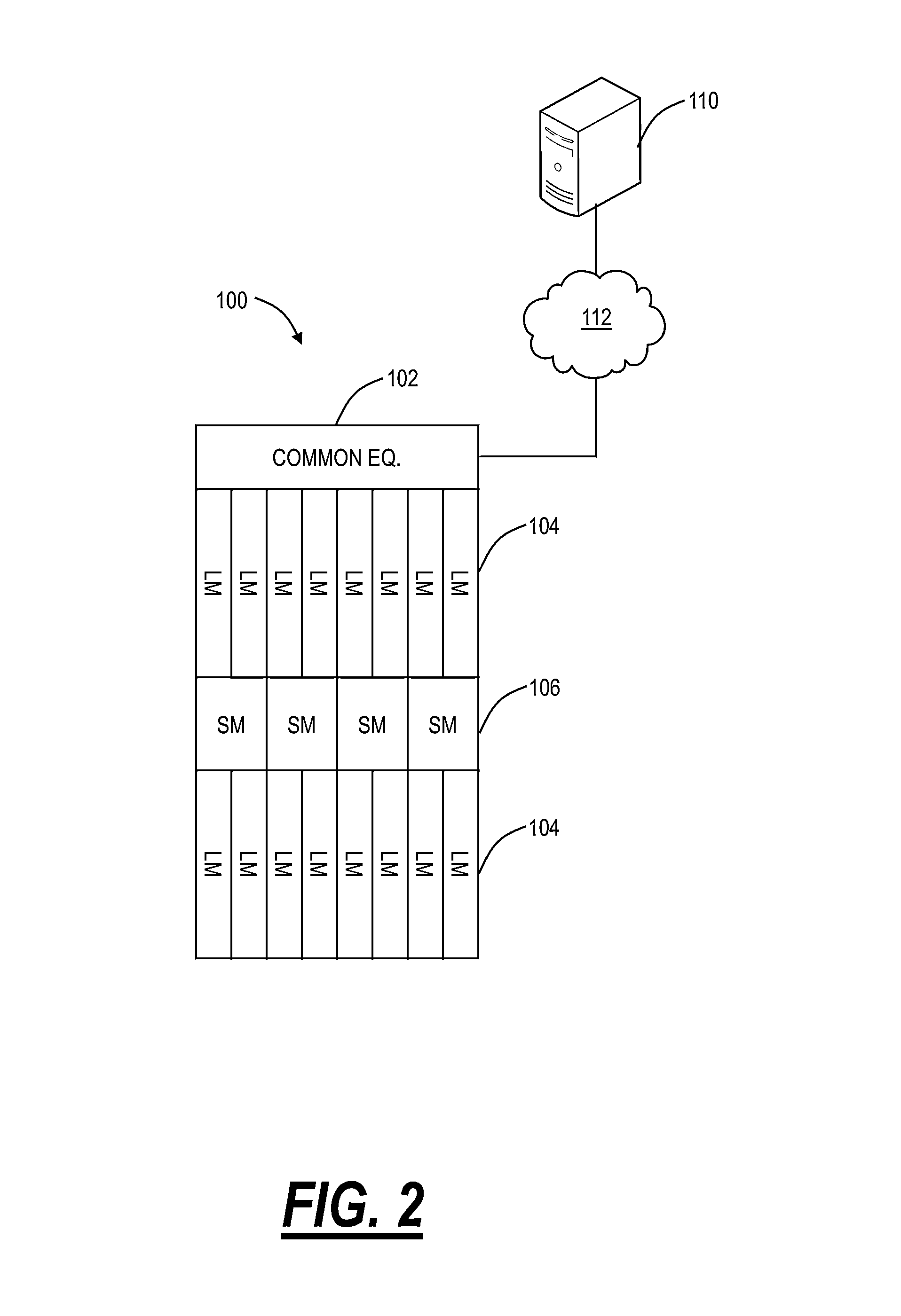Hybrid packet-optical private network systems and methods
a packet-optical and private network technology, applied in the field of network systems and methods, can solve the problems of inability to provide the full degree of partitioning provided, inability to oversubscribe, operationally challenging and expensive deployment,
- Summary
- Abstract
- Description
- Claims
- Application Information
AI Technical Summary
Benefits of technology
Problems solved by technology
Method used
Image
Examples
Embodiment Construction
[0034]In various exemplary embodiments, the present disclosure describes hybrid packet-optical private network systems and methods for a private and dedicated multi-point Ethernet Private Local Area Network (EPLAN). The network systems and methods include a Layer 1 (e.g., optical, time division multiplexing, etc) infrastructure service with the inclusion of reserved, dedicated packet switch capacity upon which clients can build their personal, private packet networks. The EPLAN used in the systems and methods described herein is different from other E-LAN implementations that are typically built using packet technologies only, such as MPLS or Ethernet VLANs. In the systems and methods described herein, packet networking methods are not used to partition the isolated LAN connectivity. Instead, dedicated Ethernet Private Lines (EPLs) are defined between dedicated virtual switching instances (VSIs) that are defined, as necessary, within larger packet-optical switches. Each VSI is parti...
PUM
 Login to View More
Login to View More Abstract
Description
Claims
Application Information
 Login to View More
Login to View More - R&D
- Intellectual Property
- Life Sciences
- Materials
- Tech Scout
- Unparalleled Data Quality
- Higher Quality Content
- 60% Fewer Hallucinations
Browse by: Latest US Patents, China's latest patents, Technical Efficacy Thesaurus, Application Domain, Technology Topic, Popular Technical Reports.
© 2025 PatSnap. All rights reserved.Legal|Privacy policy|Modern Slavery Act Transparency Statement|Sitemap|About US| Contact US: help@patsnap.com



